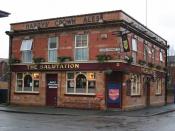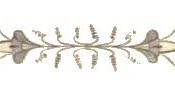Hung Harris Pham
English 111
Prof. Amster
The Red-room in Jane Eyre
It is not rare to encounter effective and incisive uses of space within nineteenth century literature. The famous novel Jane Eyre by Charlotte Brontë is one of the finest examples of a fictional work with profuse uses of space in the period. The red-room in which the little Jane Eyre is locked as a punishment for her panicky defense of herself against her cousin John Reed is the first noteworthy use of space in the novel. Not only does it signify to the reader it is a Gothic novel they are reading but the room serves as a symbol for a number of meanings as well.
Charlotte Brontë introduces the room - "one of the largest and stateliest chambers in the mansion" - to her readers with a Gothic painted picture (13). One would need to make little effort to understand why this room is called "the red-room."
Inside the room are various nuances of the red color and of some other hot colors. It has "a bed supported on massive pillars of mahogany, hung with curtains of deep red damask," which stood out "like a tabernacleâ¨in the centre" (13). Aside from a table at the food of the bed "covered with a crimson cloth," the toilet-table and chairs are made of "darkly polished old mahogany" (13). More interestingly, the room is also carpeted in red. In addition, "the two large windows, with their blinds always drawnâ¨down, were half shrouded in festoons and falls of similar drapery," and "the walls were a soft fawn colour with a blushâ¨of pink in it" (13). That Jane's uncle Reed spent the last minutes of his life in the room, along with the fact that the place is chilly, remote,


